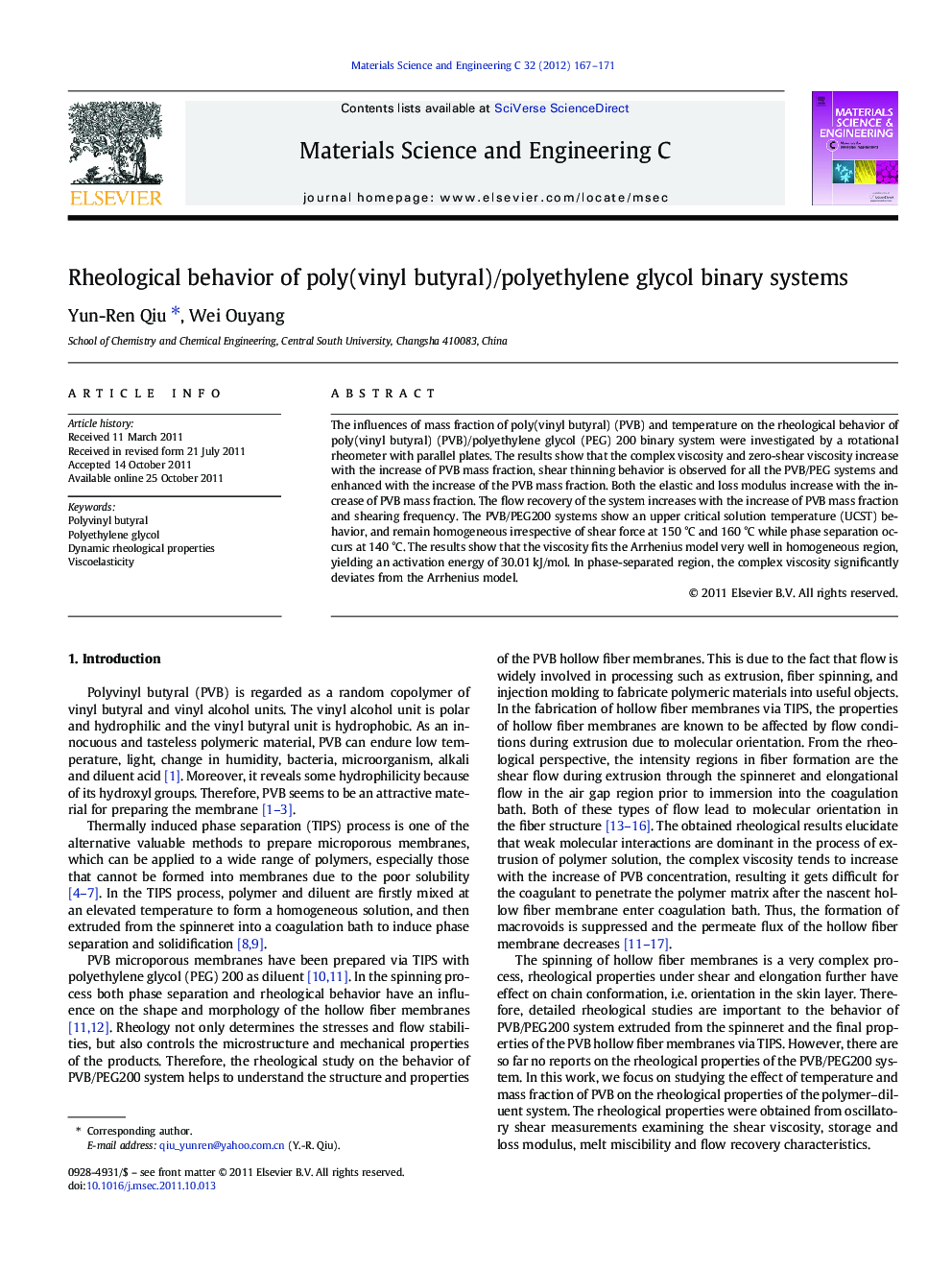| Article ID | Journal | Published Year | Pages | File Type |
|---|---|---|---|---|
| 1429566 | Materials Science and Engineering: C | 2012 | 5 Pages |
The influences of mass fraction of poly(vinyl butyral) (PVB) and temperature on the rheological behavior of poly(vinyl butyral) (PVB)/polyethylene glycol (PEG) 200 binary system were investigated by a rotational rheometer with parallel plates. The results show that the complex viscosity and zero-shear viscosity increase with the increase of PVB mass fraction, shear thinning behavior is observed for all the PVB/PEG systems and enhanced with the increase of the PVB mass fraction. Both the elastic and loss modulus increase with the increase of PVB mass fraction. The flow recovery of the system increases with the increase of PVB mass fraction and shearing frequency. The PVB/PEG200 systems show an upper critical solution temperature (UCST) behavior, and remain homogeneous irrespective of shear force at 150 °C and 160 °C while phase separation occurs at 140 °C. The results show that the viscosity fits the Arrhenius model very well in homogeneous region, yielding an activation energy of 30.01 kJ/mol. In phase-separated region, the complex viscosity significantly deviates from the Arrhenius model.
► Shear thinning behavior is observed for PVB/PEG 200 binary system. ► Storage modulus, loss modulus and flow recovery increase with the increase of PVB mass fraction. ► The PVB/PEG200 binary system shows an upper critical solution temperature (UCST) behavior. ► The time–temperature superposition principle can be applied in homogeneous region. ► The viscoelastic response deviates from the Arrhenius model in phase-separated region.
